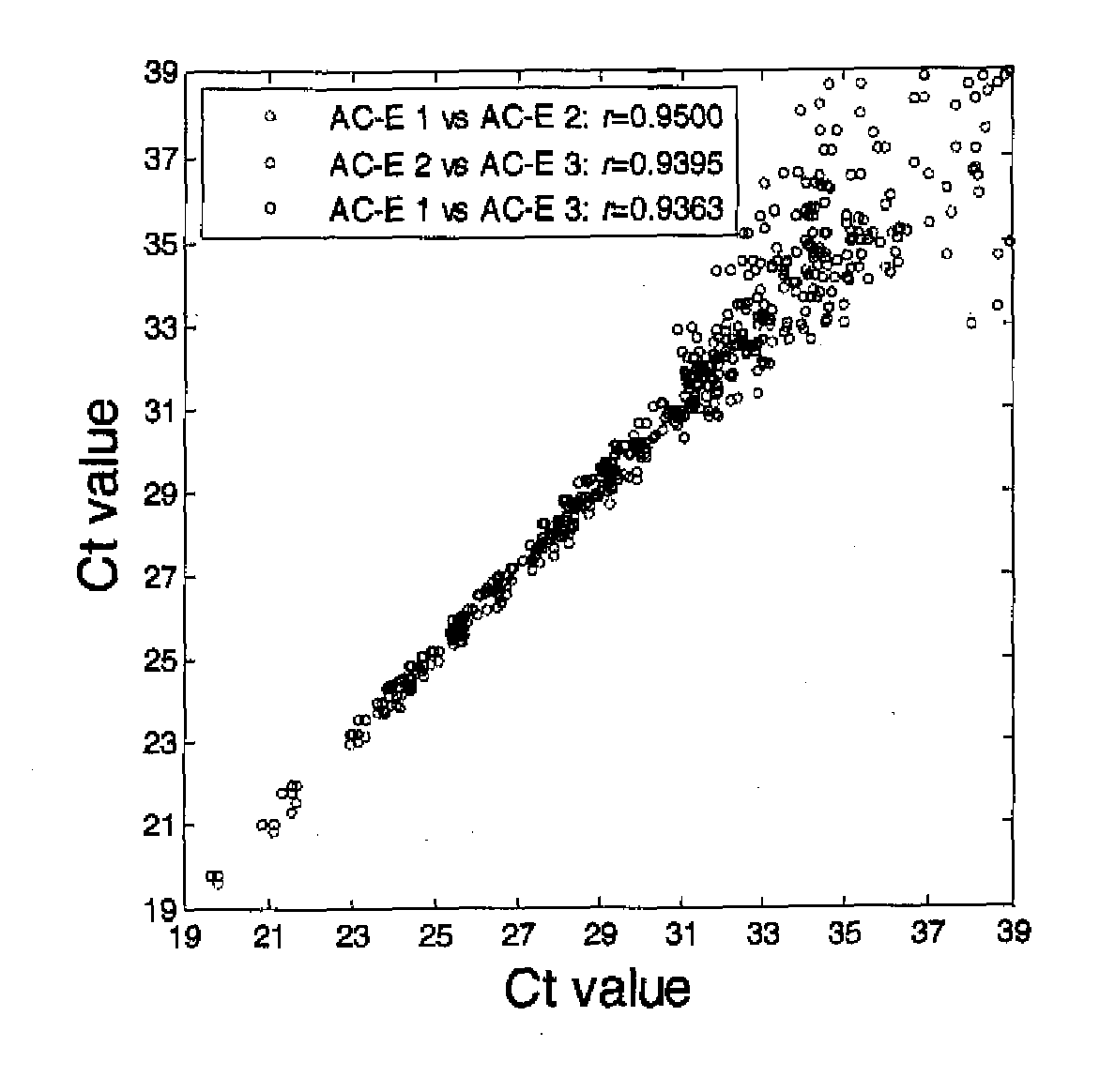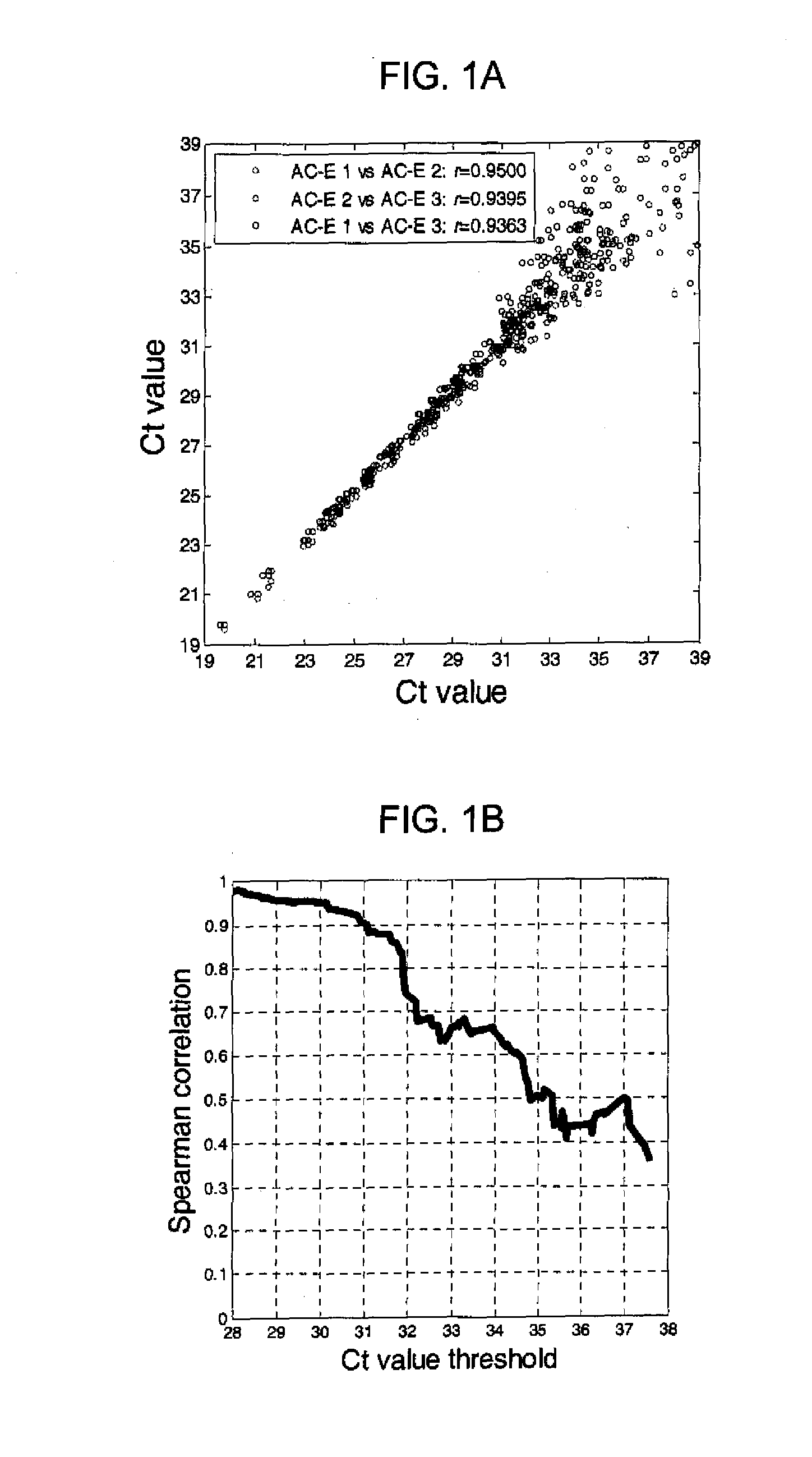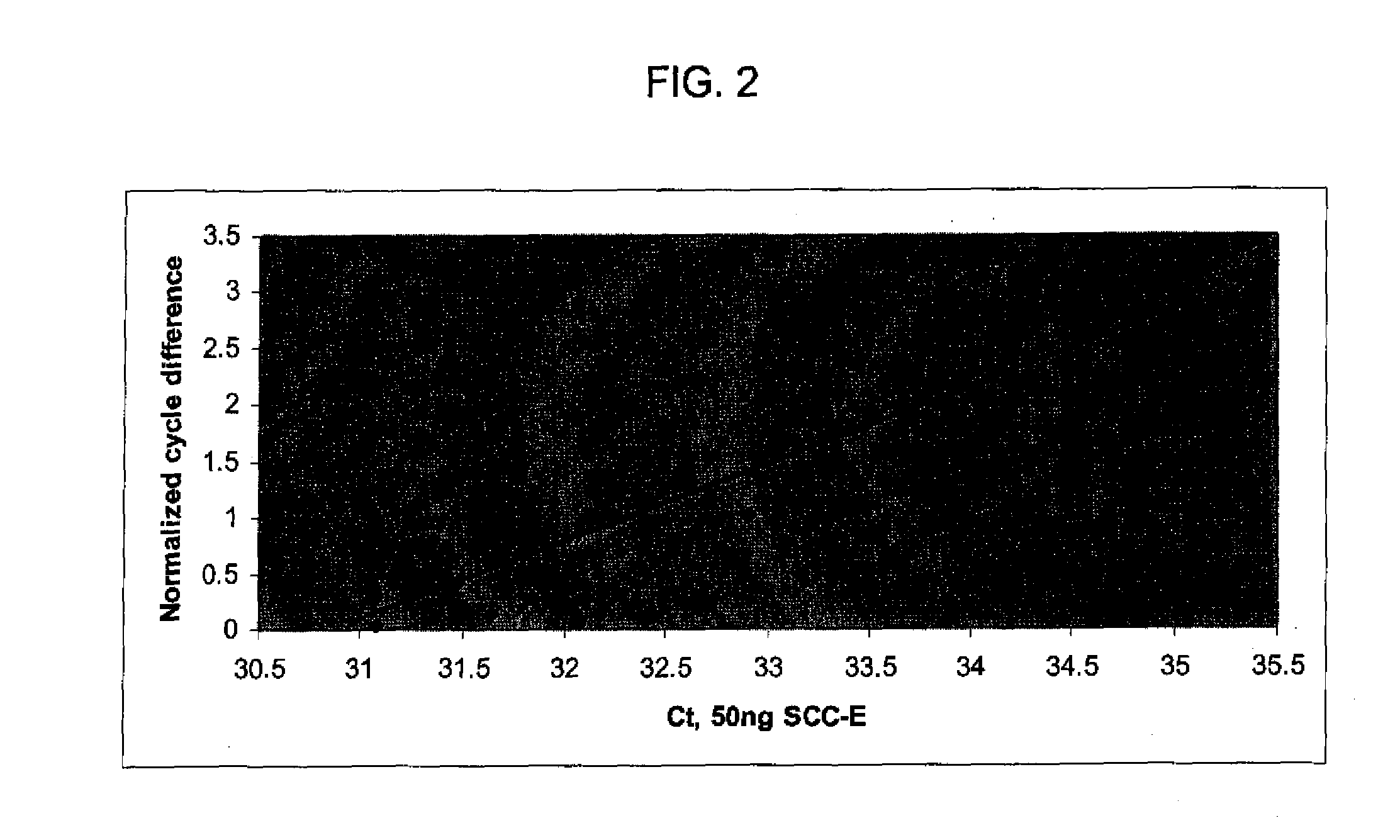Biomarkers in Peripheral Blood Mononuclear Cells for Diagnosing or Detecting Lung Cancers
a technology of biomarkers, which is applied in the field of biomarkers in peripheral blood mononuclear cells for diagnosing or detecting lung cancer, can solve the problems of limited reports about the effect of cigarette smoke, difficult to identify genetic changes that differentiate smokers from smokers, and 15% of patients with lung cancer
- Summary
- Abstract
- Description
- Claims
- Application Information
AI Technical Summary
Benefits of technology
Problems solved by technology
Method used
Image
Examples
example 1
Changes in MicroRNA Expression in PBMC Associated with Early Stage NSCLC-Isolation and TaqMan® Low Density Array Assays
[0131]Lung cancer and chronic obstructive pulmonary disease patient blood samples were collected and blood samples from tobacco smokers and never smokers were collected by a phlebotomist. Peripheral blood mononuclear cells were isolated and total RNA prepared as previously described (Nebozhyn M, et al. 2006 Blood; 107(8):3189-96; Kari L, et al. 2003 J. Exp. Med., 197(11):1477-88) using TriReagent (Sigma). RNA quality and quantity were determined by BioAnalyzer 2100 (Agilent Technologies) and NanoDrop (Thermo Fisher), respectively. The lung adenocarcinoma (AC-E) and squamous cell carcinoma (SCC-E) samples were from metastasis free stage I and II non-small cell lung cancer patients. The control groups comprised primarily smokers and ex-smokers diagnosed with chronic obstructive pulmonary disease (COPD), current and past smokers without diagnosed chronic airway inflamm...
example 2
MIRNA Expression in Pooled RNA Samples
[0146]To determine whether differences in miRNA expression could be also be detected in peripheral blood mononuclear cells RNA from surgical candidates with early stage non-small cell lung cancer as compared to patients with smoking-related chronic obstructive pulmonary disease, smokers and never smokers, pooled RNAs from patients (all ex-smokers) with stage I+II lung adenocarcinoma (early stage adenocarcinoma) or lung squamous cell carcinoma (early stage squamous cell carcinoma) were analyzed with three different control groups (chronic obstructive pulmonary disease, S, NS) on the TLDAs. Each pooled RNA consisted of 6 individuals described in Table 3.
TABLE 3Clinical and demographic profiles of non-small celllung cancer patients and controls used on TLDAs.Smoking HistoryTLDA PBMCGenderRacePack-Yrs tobacco-Statepool (n = 6)M / FWOtherAge*Years*free**TNMtearly stage AC2 / 45167451 ÷ 41220early stage SCC3 / 35173611 ÷ 26220COPD2 / 42464574 ÷ 18000Smoker1 / 5...
example 3
Differential Expression of MIRNAs in NSCLC Patients after Tumor Removal
[0154]There is a complex of direct-mRNA / TF upstream / miRNA regulations implicated by the presence of cancer (or tumor) present. A strong signature of cancer is observed in blood immune cells, which mostly downregulates immune functions. Multiple miRNAs target key nodes of immune processes. There is a trend of upregulation of miRNAs in biological, e.g., PBMC, samples of subjects with NSCLC before surgical resection of tumor tissue (PRE-) and after surgery (POST-). Specifically 5 miRNAs are highly significantly changed.
[0155]MicroRNA transcription was analyzed on a subset of patient samples, using Illumina bead arrays. PBMC from the 18 patient pairs were collected. Of these 18 patients, 10 were diagnosed with adenocarcinoma, 6 were diagnosed with LSCC and 2 were diagnosed as unclassified NSCLC. Times of sample collection post-surgery ranged from 1 to 5 months with majority of samples (10) being taken 2 months after...
PUM
| Property | Measurement | Unit |
|---|---|---|
| Fraction | aaaaa | aaaaa |
| Fraction | aaaaa | aaaaa |
| Fraction | aaaaa | aaaaa |
Abstract
Description
Claims
Application Information
 Login to View More
Login to View More - R&D
- Intellectual Property
- Life Sciences
- Materials
- Tech Scout
- Unparalleled Data Quality
- Higher Quality Content
- 60% Fewer Hallucinations
Browse by: Latest US Patents, China's latest patents, Technical Efficacy Thesaurus, Application Domain, Technology Topic, Popular Technical Reports.
© 2025 PatSnap. All rights reserved.Legal|Privacy policy|Modern Slavery Act Transparency Statement|Sitemap|About US| Contact US: help@patsnap.com



